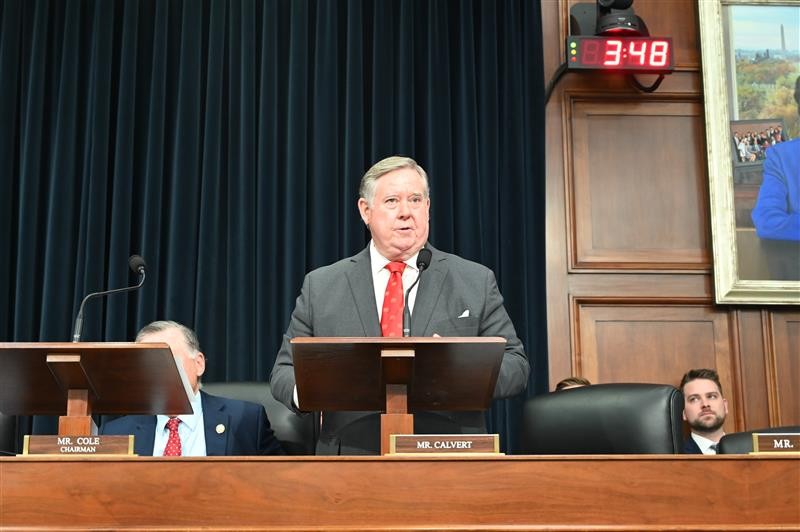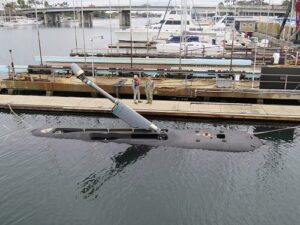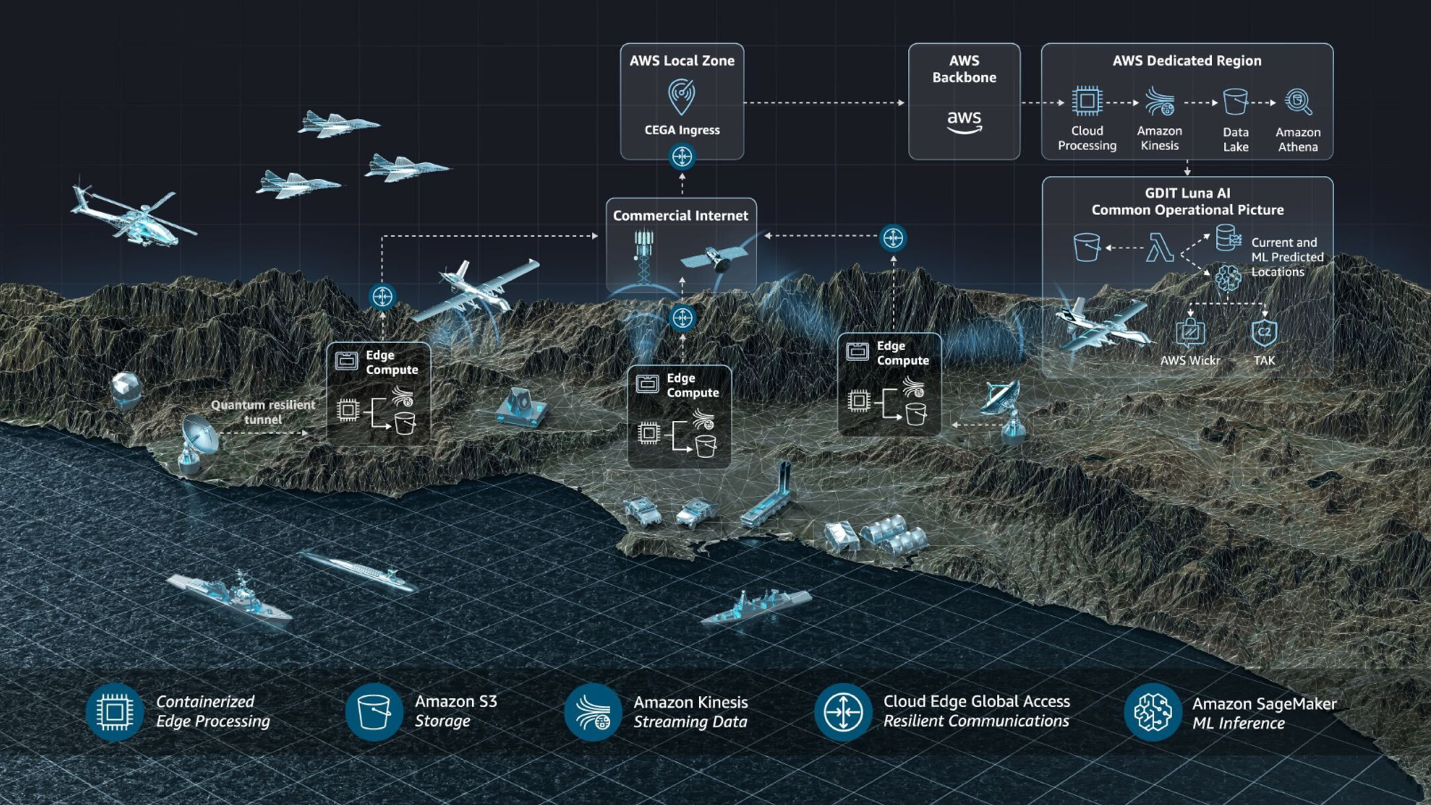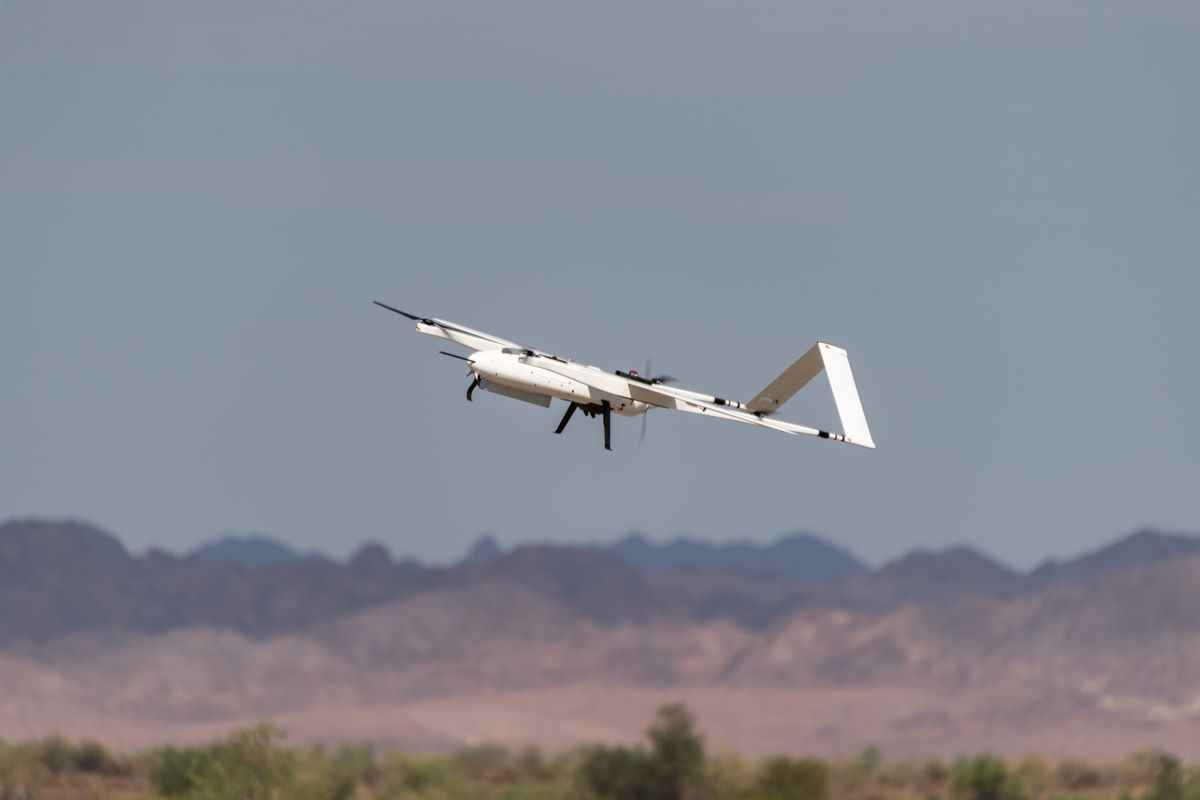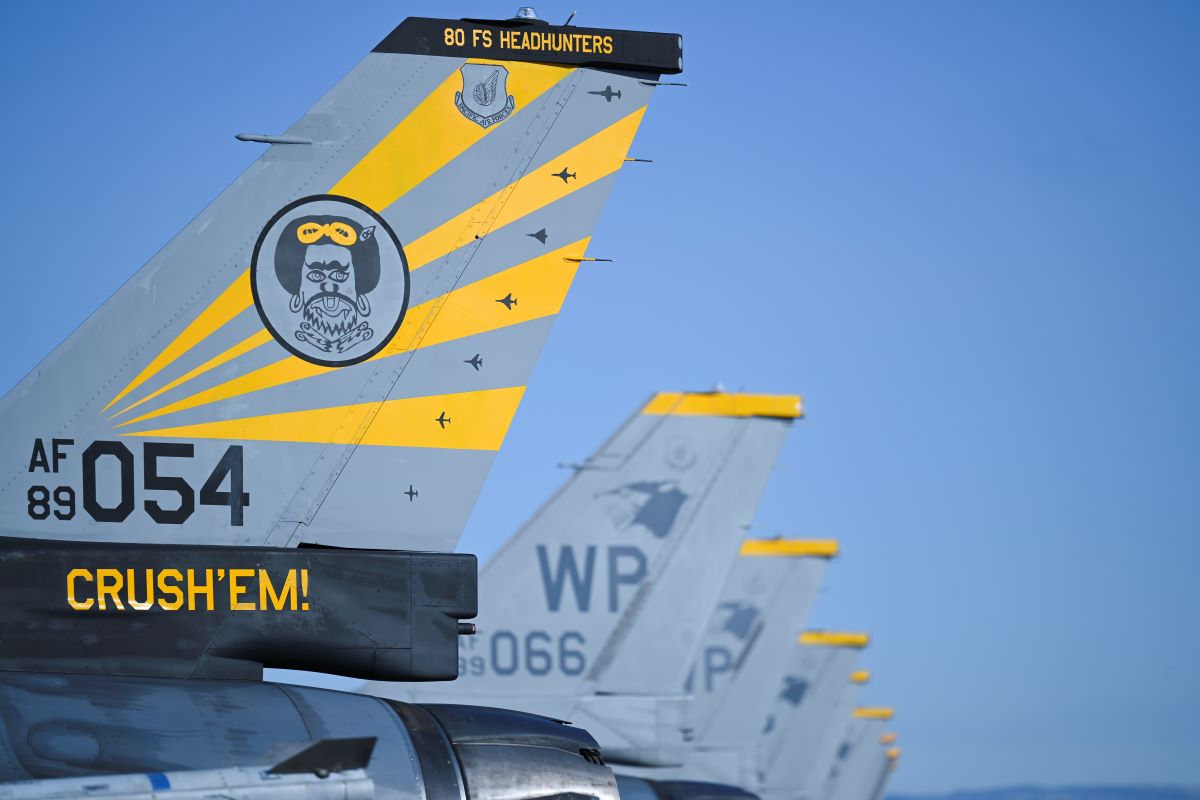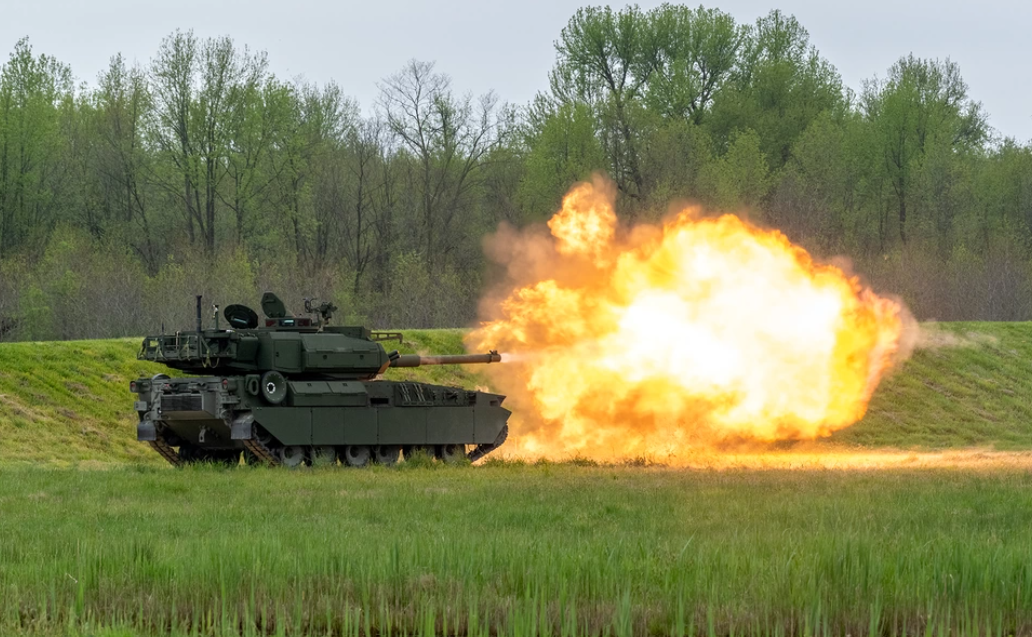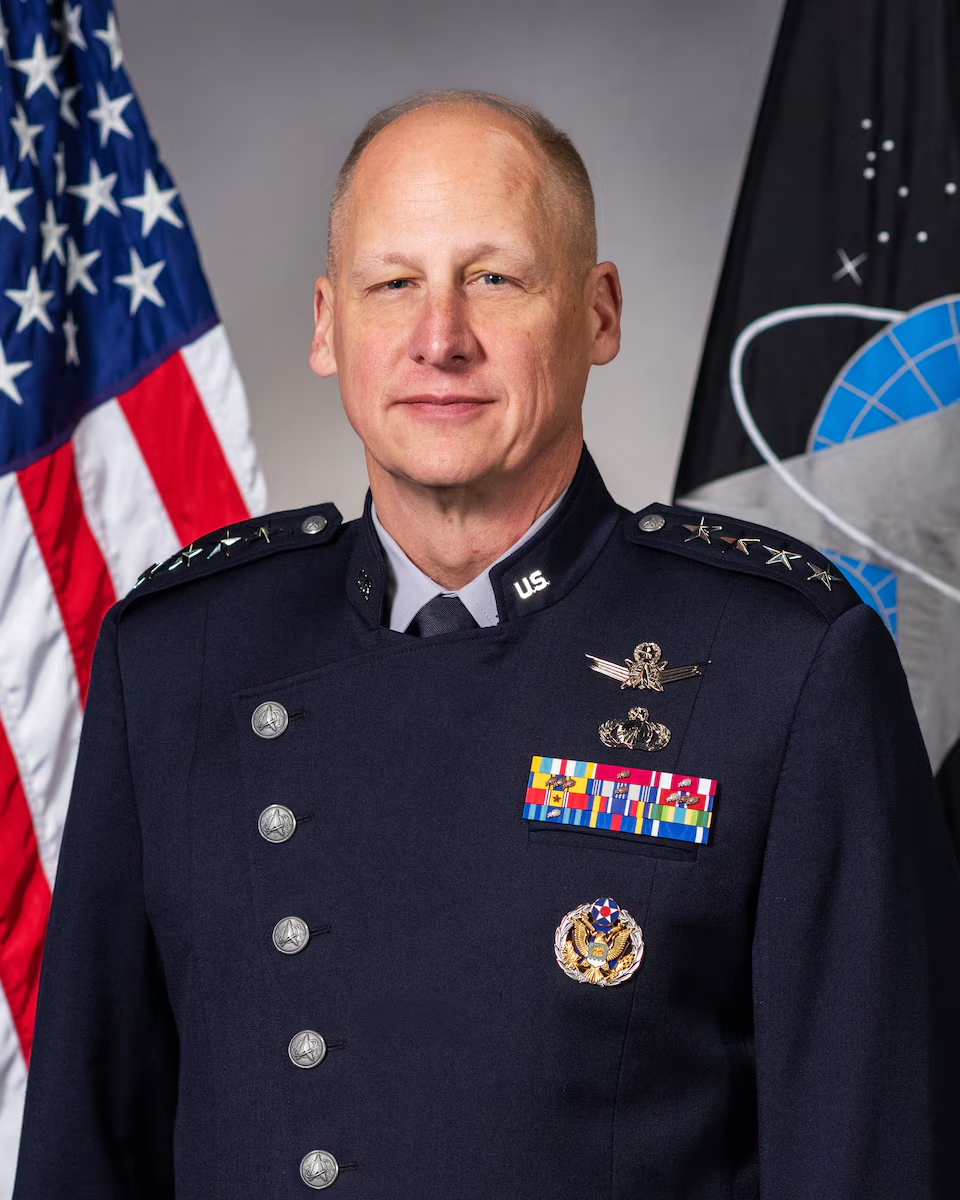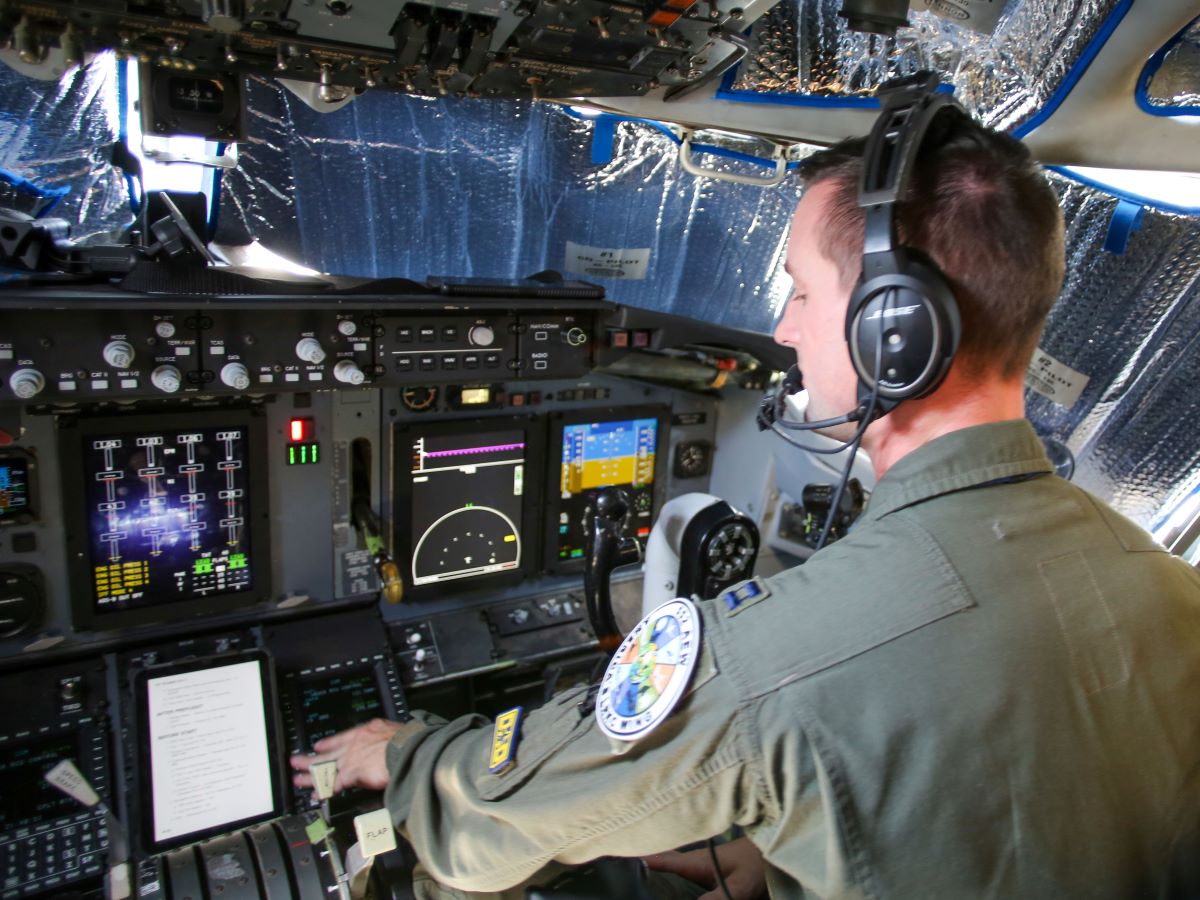Readying for V-BAT. The Coast Guard is readying three of its National Security Cutters (NSCs) to begin testing and deployment of the V-BAT unmanned aircraft system (UAS) this summer, a service spokesperson told Defense Daily
last week. The cutters are undergoing minor modifications of electrical and fiber optic systems, and installing equipment necessary for V-BAT operations. The Coast Guard is not disclosing the specific timing of the initial deployments due to security protocols but they are part of regular operational patrols, the spokesperson said. The Coast Guard in June 2024 awarded Shield AI a $198 million contract to operate the Group 3 UAS aboard the 420-foot high endurance cutters. Boeing’s ScanEagle UAS is currently used on the NSCs.
MDA Evaluation. The Missile Defense Agency on June 10 awarded Integration Innovation Inc. (i3) a contract potentially worth up to $429 million to have it help evaluate new missile defense system capabilities. The contract announcement specifically said i3 will have it “enable the identification, collection, distribution, and analysis of critical test data needed to assess and evaluate new and updated Missile Defense System capabilities to support fielding decisions to the Warfighter.” At the time of award MDA issued a $100,000 task order to start, with work to occur in Huntsville, Ala., and Colorado Springs, Colo. The total ordering period is set to last through June 2030, plus five one-year options that could last through June 2035. MDA noted i3 was the winner among 14 proposals it received. This award comes as MDA calls on industry and academia to submit white papers on useful technologies for next generation missile defense, in line with the White House’s Golden Dome initiative.
ONR Lasers. The Office of Naval Research on June 10 awarded Coherent Aerospace & Defense a cost-plus-fixed-fee contract worth up to $30 million for laser weapon system components. It specifically covers the SONGBOW Pulsed Fiber Lasers and Directed Energy Subsystems with High Bandwidth Wavefront Control Project. The DoD announcement said the contract covers development of pulsed fiber lasers for remote sensing and illumination that it also hopes will “further the development of a 400 kilowatt (kW) directed-energy subsystem by integrating a 50-kW laser with a beam-control assembly.” The $30 million contract value incorporates a 20-month base period combined with one 11-month and one 18-month option periods that would run concurrently. This was the result of a competitive procurement , with proposals received throughout the year under a long-range Broad Agency Announcement, so DoD could not describe the number of proposals they received.
EPF-15. Austal USA announced that the shipbuilder and the Navy’s Expeditionary Fast Transport (T-EPF) program team completed acceptance trials on the future Spearhead-class future USNS Point Loma (EPF-15) on May 21. The next step for EPF-15 is delivery to the Navy, set for this month. This is the second EPF Flight II ships delivered to the Navy, following USNS Cody (T-EPF-14). The Fight II variant includes “enhanced” naval medicine capabilities, on the way to ultimately producing a modified EPF as a full medical vessel, the Bethesda-class (EMS-1). The new class will aim to provide hospital-level care. Austal had delivered 14 EPFs to the Navy, with two Flight II EPFs still under construction.
LPD-25 Maintenance. The Navy on June 12 awarded BAE Systems’ San Diego Ship Repair facility a $156 million contract for the maintenance, modernization and repair of the amphibious transport dock ship USS Somerset (LPD-25) in a fiscal year 2025 Docking Selected Restricted Availability (DSRA). The announcement notes this covers all of the labor, supervision, equipment, production, testing, facilities, and quality assurance needed to prepare for and perform the work. The contract includes options that, if exercised, would raise the total value up to $178 million. The work is expected to be finished by January 2027. While the contract was solicited for pen competition, DoD noted this was the only offer it received for LPD-25.
B-2 QUICKSINK. The U.S. Air Force said this month that a service B-2 Spirit stealth bomber by Northrop Grumman used a 500-pound, long-range anti-ship weapon from the Air Force Research Laboratory in a QUICKSINK test at the Gulf Test Range by the Air Force 53rd Wing at Eglin AFB, Fla., Air Force Col. Dan Lehoski, the 53rd Wing commander, said in an Air Force statement that the QUICKSINK demonstration “offers an affordable, game-changing solution to rapidly and efficiently sink maritime targets” and that the weapon “adds options for the warfighter and enhances operational flexibility.” DoD has previously used Air Force F-15 and U.S. Navy F/A-18 fighters for QUICKSINK, and last year the Navy Pacific Rim Exercise featured a B-2 conducting a QUICKSINK Joint Capability Technology Demonstration using a 2,000-pound Boeing GBU-31 Joint Direct Attack Munition. The Air Force has said it wants to field the Spirit Realm 1 (SR1) open mission systems architecture for the stealth bomber, which first flew in 1989. SR1 comes under the B-2 Battlespace Collaborative Combat Communications (B2C3) integration effort. Under B2C3, the B-2 program is to replace the BAE Systems’ AN/ARC-234 radio, which is to retire by the end of fiscal 2026, and the HAVE QUICK waveform.
CYBERCOM Nominee? Among the eight flag officers fired by the Trump administration so far was Air Force Gen. Timothy Haugh, relieved in April as the head of U.S. Cyber Command (CYBERCOM) and the National Security Agency. “We pruned him for over a decade to fill those shoes, and I don’t know that anybody can fill those shoes right now, and it’s gonna take a year or two for people to get there,” said Rep. Don Bacon (R-Neb.), the chairman of the House Armed Services Committee’s Cyber, Information Technologies, and Innovation body. “I really believe that the most happy people on the firing of Gen. Haugh were Russia and China.”
…Explanation. Bacon said he knew most of the eight flag officers fired by the Trump administration, who also included then Chairman of the Joint Chiefs of Staff Air Force Gen. Charles Q. Brown. “Yes, the president has the constitutional right to hire and fire generals, but there’s also decency involved here,” said Bacon, a retired Air Force brigadier general. “I’ve known many of these people. I served with most of these folks when I was a colonel and as a one-star. I knew one as a captain. They served their whole adult life, and I think they deserved an explanation why they were fired, and I think the American people deserved that as well.”
…Limited Cyber Rules of Engagement. Bacon said he is concerned by limits on U.S. cyber offense and that “I think we should be carrying a bigger stick here,” given Russian and Chinese cyber attacks. “I’ve talked to multiple layers [of the U.S. cyber community], and they are restricted based off the rules of engagement,” Bacon said. “Maybe they’re appropriate. I just hope we re-look at them because if China can attack our energy grid, our Wall Street grid, our hospitals, I think we should be reviewing if our response is adequate.”
York on Deck. The first of York Space Systems’ 12 prototype satellites it building for a Space Development Agency (SDA) constellation is ready to launch by the end of June, the Denver-based company said last week. The Dragoon mission will demonstrate secure connectivity to warfighter platforms for targeting, missile warning, and tracking of advanced missile threats. SDA in October 2022 awarded York a potential $200 million contract for the Tranche 1 Demonstration and Experimentation System, called T1DES, to demonstrate tactical satellite communications and Integrated Broadcast Service from low Earth orbit through 2031.
Security Detection Teaming. Artificial intelligence solutions provider BigBear.ai has teamed with Analogic to integrate its computer vision screening technology with Analogic’s computed tomography-based carry-on baggage scanners used at airports worldwide. BigBear’s computer vision technology comes via the company’s previous acquisition of Pangiam, which developed an AI-based threat detection platform for integration with security scanners. The companies said the integration will provide airport security personnel with real-time insights to adapt screening operations.
New Company Lab. Allen Control Systems has launched its Innovation Lab, bringing together interdisciplinary engineering teams to accelerate the development of autonomous systems. The lab will be led by Alex Clark, a former senior director of advance innovations at BlueHalo with experience in counter-unmanned aerial systems (C-UAS). Allen’s main product is Bullfrog, an artificial intelligence-enabled robotic weapons station for C-UAS. “We are doubling down on our commitment to build the weapons systems that the U.S. and our allies will need for the conflicts of the future,” Steve Simoni, co-founder and president of ACS, said in a statement. “Alex’s proven record of scaling complex defense technology programs and his deep engineering and technical expertise make him the ideal innovation leader.”
People News. Jason Rathje, who has led the Defense Department’s Office of Strategic Capital since it was created in late 2022, said last week he is stepping down. General Dynamics last week said that Danny Deep, the company’s executive vice president of Combat Systems, has been promoted to EVP of Global Operations with a base salary of $1.2 million. Jason Aiken, GD’s lead for the Mission Systems division, will also be EVP for Combat Systems. Miami-based drone maker Heven has appointed Michael Buscher as president of U.S. operations to lead engagement with the defense community and help scale operations for various government and commercial customers. Buscher is a retired Lt. Col. In the Army Reserve and former CIA officer.
Qatari Jet. Defense Secretary Pete Hegseth this week declined to publicly provide specifics on DoD’s potential acceptance of a 747-8 airliner from Qatar that President Trump reportedly wants to use as Air Force One. “Any specifics about future aircraft that could be Air Force One can’t be discussed here. But there is a conversation about a memorandum of understanding…[that] remains to be signed,” Hegseth said when pressed for details during his hearing before the Senate Appropriations Defense Subcommittee. Sen. Jack Reed (D-R.I.), who also chairs the Armed Services Committee, urged Hegseth to provide specifics, to include the cost of reconfiguring the aircraft to meet the security requirements for Air Force One. “Why can’t that be revealed in this session? This is the Appropriations Committee of the United States Senate. We appropriate the money that you will spend after it’s authorized by my committee, [SASC]. And you cannot tell us how much the contract is for?” Reed said.
‘Valley of Death.’ A new bipartisan proposal from the leaders of the House Armed Services Committee to speed up DoD’s acquisition process includes establishing the Bridging Operational Objectives & Support for Transition (BOOST) program at DoD to help promising technologies cross the “Valley of Death” from development into production. Reps. Mike Rogers (R-Ala.) and Adam Smith (D-Wash.), the HASC chair and ranking member, respectively, noted their Streamlining Procurement for Effective Execution and Delivery (SPEED) Act aims to help bring more new entrants to work with the Pentagon, to include reducing “barriers to the DoD’s use of commercial technology.” The legislation is expected to be included as part of the fiscal year 2026 National Defense Authorization Act, according to Rogers and Smith.
DOT&E Cut. Defense Secretary Pete Hegseth said this week his directive to reduce the size of the Pentagon’s Office of the Director of Test and Evaluation down by 50 personnel, down to 30 civilians, 15 military personnel and one Senior Executive Service leader, was a result of a review led by Deputy Defense Secretary Stephen Feinberg and the Department of Government Efficiency team working with DoD. “After we got rid of a lot of the really low hanging fruit of tens of billions [of dollars] of contracts and things that we’ve reduced that were duplicative, that were completely wasteful, that were creating PowerPoint presentations that no one was looking at, you start to look at things like DOT&E…which in a headline sounds quite significant and it can be in many ways. But when you ask the services and you ask the Joint Staff, you talk to the comptroller and CAPE and you go across the other under secretaries, there’s the universal recognition that the DOT&E’s mission has bloated and expanded well beyond the scope of what it was supposed to be,” Hegseth said at a House Appropriations Defense Subcommittee (HAC-D).
…Calvert Seeks Details. Rep. Ken Calvert (R-Calif.) pressed Hegseth for details on the DOT&E downsizing, which has already received push back from the top Democrats on the House and Senate Armed Services Committees. “There’s a lot of examples of DOT&E catching flaws that would’ve had catastrophic consequences for our military, including loss of life,” Calvert said. “We share the same goals to create a more efficient, leaner DoD. But with things like Golden Dome coming along, we want to make sure that the technologies we pick are going to work and that we fund them accordingly.”
FMTV A2 Extension. The Army on June 11 awarded Oshkosh Defense a $792.4 million contract extension for continued delivery of Family of Medium Tactical Vehicles A2 trucks. Oshkosh said the three-year deal extends deliveries on its current FMTV A2 contract into 2030, and will include providing the Low Velocity Air Drop (LVAD) vehicle variants. “The FMTV A2 contract extension enables the Army to continue modernizing its fleet with proven medium tactical vehicles in support of the Army Transformation Initiative and Force Design 2030,” Pat Williams, Oshkosh Defense’s chief programs officer, said in a statement. “The FMTV A2 LVAD variants fill a critical capability gap for the Airborne community by replacing an aging fleet with an upgraded capability that can be rapidly deployed in contested and austere environments.”
120mm Ammo. The Army on June 11 also awarded General Dynamics Ordnance and Tactical Systems a $706.5 million contract for production and delivery of 120mm ammunition. Work on the deal is expected to be completed by June 2029, according to the Pentagon.
Netherlands FMS. The State Department said on June 12 it has approved a possible $215 million foreign military sale with the Netherlands for nearly 300 Joint Air-to-Ground Missiles. Along with the Lockheed Martin-built JAGMs, the deal would also include captive air training missiles, missile handling training and spare parts. “The Netherlands intends to use these defense articles and services to modernize its armed forces and expand its capability to strengthen its homeland defense and deter regional threats. This will contribute to the Netherlands’ military goals of updating capability while further enhancing interoperability with the United States and other allies. These systems will be employed by AH-64 Apache attack helicopters operated by the Royal Netherlands Air Force,” the Defense Security Cooperation Agency said in a statement.
Tech Execs/Army. The Army on June 13 announced the establishment of the new Detachment 201: Executive Innovation Corps, swearing in four tech executives as Army Reserve officers to support the effort aimed at bringing in Silicon Valley expertise to support innovation efforts. “In this role they will work on targeted projects to help guide rapid and scalable tech solutions to complex problems. By bringing private-sector know-how into uniform, Det. 201 is supercharging efforts like the Army Transformation Initiative, which aims to make the force leaner, smarter, and more lethal,” the Army said. Shyam Sankar, Palantir’s chief technology officer, Andrew Bosworth, CTO of Meta, Kevin Weil, OpenAi’s chief product officer and Bob McGrew, adviser at Thinking Machines Lab and OpenAI’s former chief research officer, were sworn in as Army Reserve lieutenant colonels. “Their swearing-in is just the start of a bigger mission to inspire more tech pros to serve without leaving their careers, showing the next generation how to make a difference in uniform,” the Army said.

